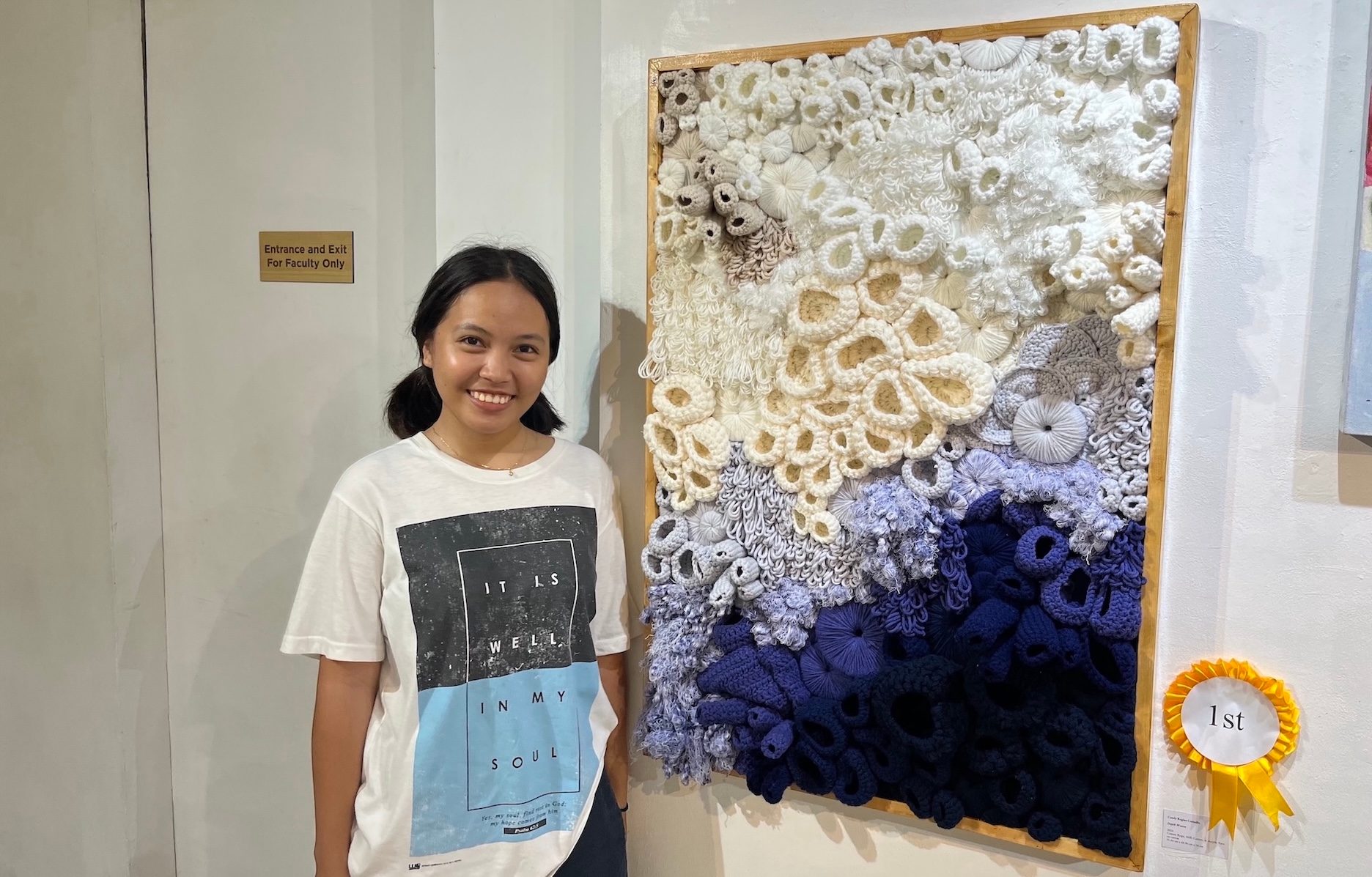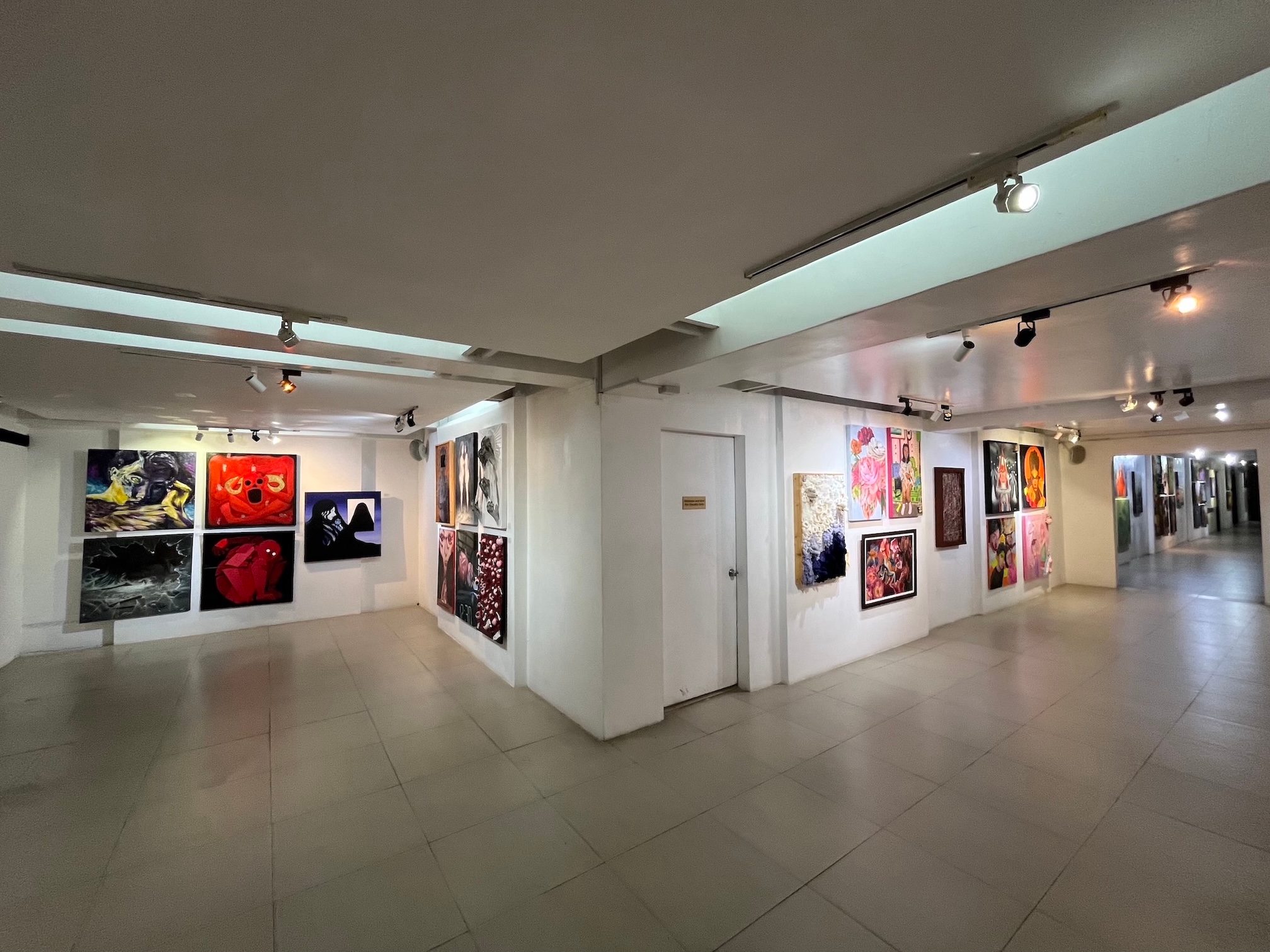SUMMARY
This is AI generated summarization, which may have errors. For context, always refer to the full article.

CEBU CITY, Philippines – Fine Arts students from the University of the Philippines Cebu showcased their artworks for the 48th National Artist Jose T. Joya Awards, joining an open-themed exhibit held at the university’s Jose T. Joya Gallery.
The annual event allows students to freely express their personal stories and advocacies through art.
This year, the gallery is open to the public from November 15 to November 28.
Studio Arts junior Candy Regine Casinillo won first place for her crochet creation called “Depth Woven.” The artwork represents the marine ecosystem in her hometown of San Remigio, Cebu, where she developed her fondness for swimming and conservation of sea life.
Casinillo began with portraiture, but during her materials course, she sought to incorporate texture into her work through fabric, specifically yarn and crocheting.
For “Depth Woven,” she used three materials: cotton rope, milk cotton, and acrylic yarn.
“Ma-manipulate nako siya into unsa ako nahan kay smooth ra siya and maform siya sa unsa ako nahan i-porma,” said Casinillo.
(I can manipulate yarn easily because of its smooth texture and form it in the ways I want to.)
The blue yarns represent healthy coral reefs and other marine life, while the white ones symbolize coral bleaching, which is mainly caused by warmer ocean temperatures linked to climate change.
“You will see corals, sea sponges, round starfishes, sea urchins, and seaweeds,” said Casinillo.
“Nag-raise siya ug awareness sa atoa to take care of our marine environment kay ganahan ko na makita pa sa ubang future generations ang corals ug makaabot pa sila,” she added.
(The piece raises awareness of taking care of our marine environment because I want the future generations to still get a glimpse of these corals in real life.)
Casinillo also hopes her piece would encourage people to visit San Remigio.
“Proud ko na taga San Remigio ko, and since known siya sa dagat, ganahan sad ko na maapil ang corals sa image sa San Remigio,” she said.
(I’m proud that I’m from San Remigio, and since it’s known for its beaches, I also want corals to be part of its image.)

AI impact on art
For finalist Rue Langamen, a freshman and the lone Product Design student who joined this year’s exhibit, the event served as a platform to discuss the pitfalls of using artificial intelligence to generate art.
“I wanted to focus on the effects of AI art sa people, misinformation of the public, sa jobs sa artists, and most especially unsa’y effects niya sa akoa,” said Langamen.
(I wanted to focus on the effects of AI art on people, public misinformation, artist jobs, and most especially its effects on me.)
The young artist lamented the use of AI-generated art in billboards, which he considers an “insult” to their craft. This prompted him to come up with the concept for his first-ever Joya piece.
His mixed media interactive piece called “A-Eye Art” depicts human flesh and eyes. It makes use of repurposed art materials and includes a mirror as its centerpiece.

The flesh represents the human control that robots or machines cannot replicate, while the eyes signify the attention given to AI art. Repurposed materials are indicative of the time artists invest in their works.
“[The visitor’s] reflection in the mirror…shows that AI is still bounded by human control, a reflection of our decisions. These tools are doing what we command them to do,” Langamen added.
The 2024 Joya Awards received over 100 entries and recognized first- to third-place winners, along with eight other finalists and eight semifinalists. – Rappler.com
Add a comment
How does this make you feel?
There are no comments yet. Add your comment to start the conversation.